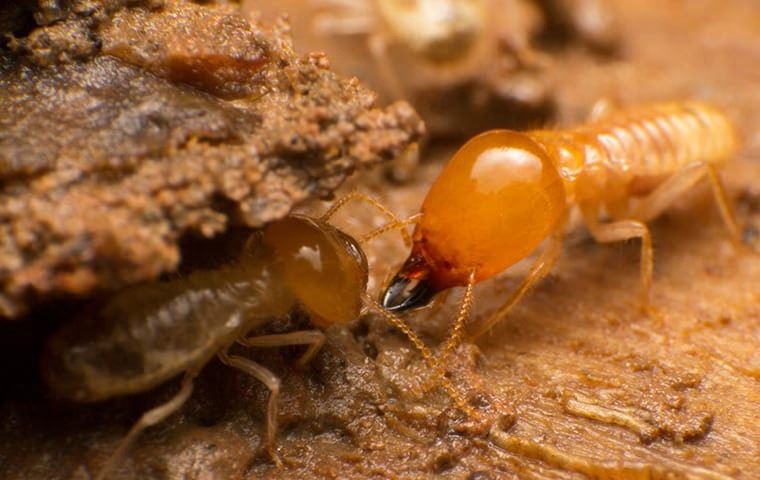
Subterranean Termites Identification & Prevention
Frequently Asked Questions about Subterranean Termites
Have questions? We are here to help. Still have questions or can't find the answer you need? Give us a call at 252-424-7966 today!

-
How can I prevent subterranean termites in the future?
Pests are not just a nuisance; they pose potential health risks and are capable of damaging property.
- Avoid problems with subterranean termites with the help of the following prevention tips.
- Clean gutters and install weatherstripping around windows and doors to prevent water from damaging the inside of your home.
- Leave a crushed stone barrier between any soil or mulch and your foundation.
- Remove fallen trees, tree stumps, and excess piles of organic debris from your property.
- Replace garden mulch with crushed rock, rubber mulch, or other non-organic options.
- Use dehumidifiers to keep your basement dry.
- Ventilate your crawlspace.
- Be proactive and partner with Albemarle Termite & Pest Control.
-
How do I get rid of subterranean termites?
Acquiring help from an Elizabeth City pest control expert is the best way to control subterranean termites and keep them from returning. At Albemarle Termite & Pest Control, our technicians are highly trained and dedicated to providing safe and effective termite control services that are affordable. We are a local pest control company whose number one priority is putting our customers first and exceeding expectations. For home or business owners looking to control pests on their property once and for all, call Albemarle Termite & Pest Control today!
-
Where will I find subterranean termites?As their name describes, subterranean termites nest in the ground in moist soil. They travel through the ground or in mud tubes that they create to reach their food sources. Subterranean termites do not nest inside the wood they are feeding on. Inside a home, termites invade structural wood out of sight. Termite tunnel through and feed on structural wood located above ceilings, below floors, behind walls, and behind the door and window frames.
-
Why do I have a subterranean termite problem?
While worker termites are out foraging for food, they enter homes through cracks in the foundation. They also move inside through wooden structures on your home that are making contact with soil. Termites get into homes through wood siding, deck posts, porch steps, and wood trim.
Termites find properties with fallen trees, tree stumps, leaf piles, and other organic debris on them very attractive. Subterranean termites prefer wood (inside or outside) that has been damaged by water but will eventually move on to feed on sound wood and other materials, including paper and cotton.
-
Are subterranean termites dangerous?
Termites pose no health risks to people, and they also do not bite or sting. In fact, termites rarely ever make physical contact with people. But, these wood-eating pests are dangerous to the structure of a building. Termites enter inside without fanfare, where they work unnoticed for months or even years. When tunneling through and feeding on structural wood, the damage they cause becomes extensive and expensive to repair. It's also important to remember that most homeowners' insurance does not cover termite damage as it is preventable.
-
What are subterranean termites?
Subterranean termites are a type of wood-destroying insect known for invading buildings and causing damage to structural timbers. These termites are widespread across the United States. They feed on the cellulose found in wood and plant matter. Outside in nature, they help speed up the process of decaying plants, tree roots, and tree stumps. Inside, they are destructive and unwanted pests.
Subterranean termites live together in large colonies. They divide the labor in the colony into three different groups or castes—workers, soldiers, and reproductives, with workers making up the bulk of its members. In spite of being soft-bodied, blind, and tiny, worker termites are responsible for the mass structural damage these insects cause.



